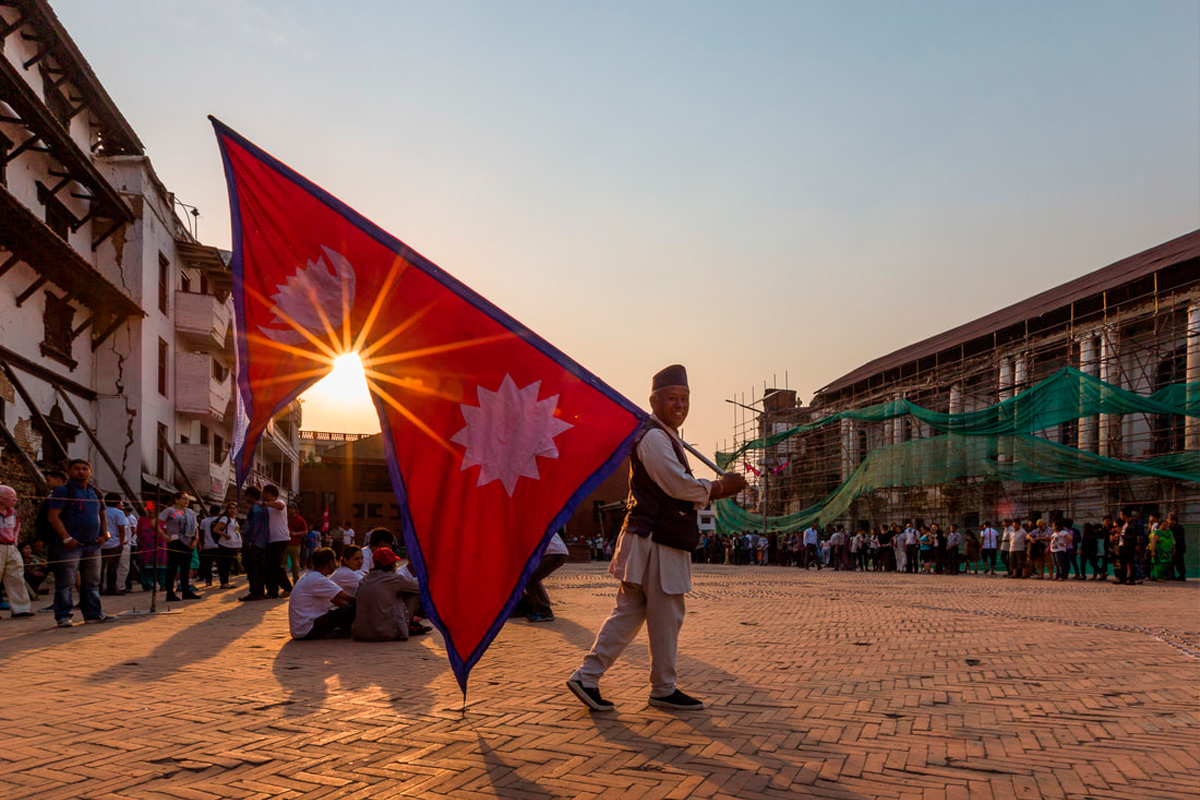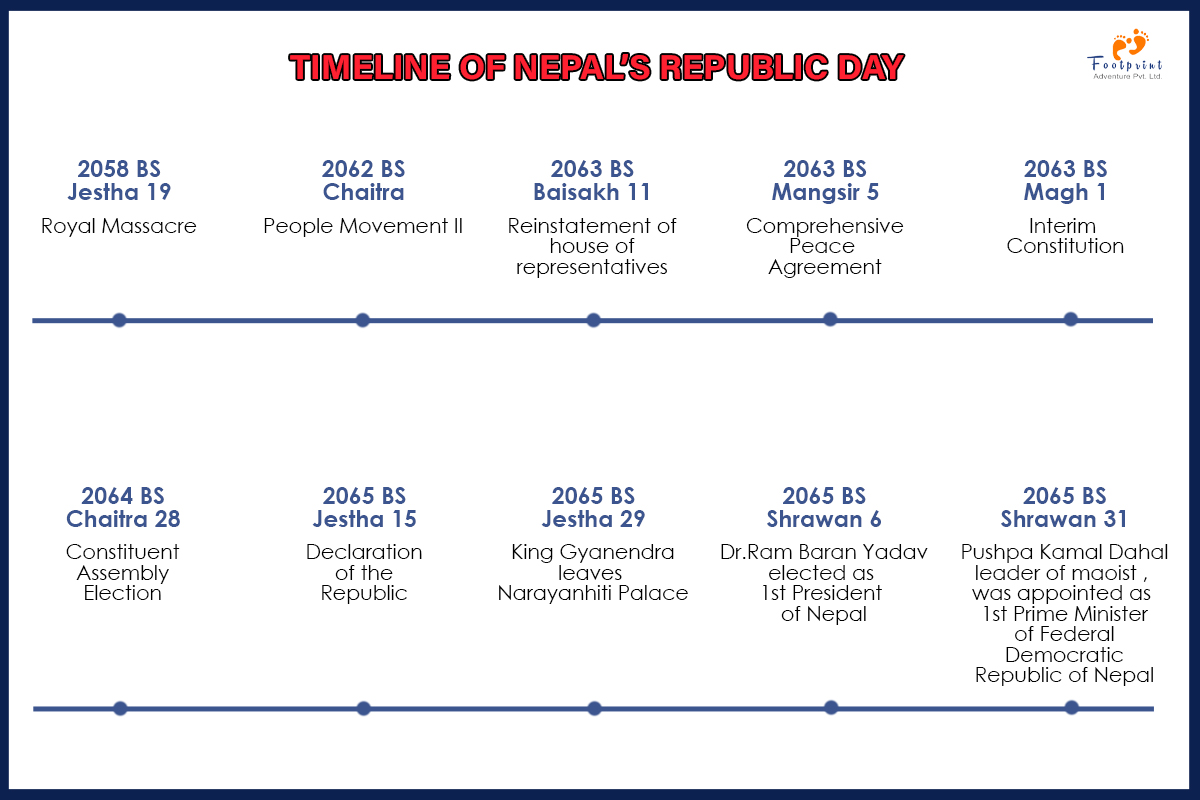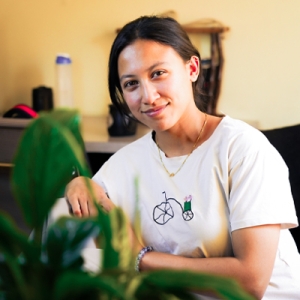Nepal, a federal democratic republic located in the Himalayas, is the most recent nation to transition to a republican form of government. It shares borders with the People's Republic of China to the north and the Republic of India to the south, east, and west. Until 2008, the Shah dynasty ruled Nepal, maintaining the monarchy for over 240 years.
Between 1996 and 2006, Nepal experienced a violent civil war. Maoist rebels fought against government forces, aiming to remove the monarchy and establish a republic. They believed the monarchy represented poverty, injustice, and an outdated system. What began as small clashes escalated into a decade-long armed conflict, resulting in many casualties, widespread displacement of people, and significant destruction across the country. Although the Maoists initially aimed for a communist republic, the civil war ultimately led to the abolition of the monarchy.

After years of fighting and negotiations, the two sides reached a peace deal, allowing Nepal to transition into a federal democratic republic. On May 28, 2008 (Jestha 15, 2065 BS), Nepal officially abolished its monarchy, marking a historic shift in its political landscape. The end of the Shah dynasty's reign is celebrated as Republic Day or Ganatantra Diwas, signifying the beginning of a new era of democratic governance. The following day, May 29th, was also declared Republic Day to commemorate the birth of the Federal Democratic Republic of Nepal. Citizens nationwide celebrated with colorful rallies, waving flags, and rejoicing in their newfound freedom and empowerment.
Until 2008, Nepal was a Hindu nation. However, after establishing the federal democratic republic, it declared itself a secular country. Nepal boasts a religiously diverse society with Hindus forming the majority, a significant Buddhist population, and adherents of Islam, Christianity, and traditional indigenous belief systems. This diverse mix of faiths reflects Nepal's history of embracing different cultures, allowing people from various backgrounds to coexist peacefully while practicing their respective religions. Nepal's transition to a secular state highlights its openness to different cultures and its ability to accommodate the practices of multiple communities within its borders, promoting religious freedom and inclusivity.
Republic Day symbolizes Nepal's commitment to democratic ideals, human rights, equality, and justice. It serves as a reminder of the sacrifices made by those who fought tirelessly to establish a governance system that reflects the will of the people. Beyond the celebrations, Republic Day offers an opportunity for Nepalese to reflect on the challenges ahead and renew their commitment to building a prosperous, inclusive, and vibrant nation. It symbolizes the resilience and determination of the Nepali people, who have overcome obstacles to shape their destiny and chart a new course for their beloved country.
Origin and History of Ganatantra Diwas (Republic Day) in Nepal
Nepal's journey to becoming a republic began with Jana Andolan I in 1990. Before this, Nepal was under the absolute monarchy of King Birendra, with the Panchayat system restricting political freedom. The first People's Movement (Jana Andolan I), led by the Nepali Congress and the United Left Front, was a pro-democracy movement demanding reforms. This movement peaked in April 1990, when King Birendra agreed to lift the ban on political parties. Subsequently, in November 1990, Nepal adopted a new constitution, transforming into a constitutional monarchy with a parliamentary democracy.

Despite these changes, economic disparity, social injustices, and political instability continued. In 1996, the Communist Party of Nepal (Maoist), led by Pushpa Kamal Dahal (Prachanda) and Dr. Baburam Bhattarai, started an armed insurgency to overthrow the monarchy and establish a people's republic. This conflict, known as the Nepalese Civil War II, lasted for a decade and resulted in over 17,000 deaths and widespread displacement.
During this period, Nepal experienced significant political instability, with frequent changes in government. Sher Bahadur Deuba served as Prime Minister multiple times managing the country's unstable political situation. The situation took a dramatic turn with the Royal Massacre on June 1, 2001 (Jestha 19, 2058 B.S.), where King Birendra and several members of the royal family were killed.
In 2005, King Gyanendra dismissed the parliament of Sher Bahadur Deuba and took all the executive power into his hands, leading to widespread discontent. This set the stage for Jana Andolan II in April 2006, a massive protest movement led by the Seven Party Alliance (SPA) - an Alliance of seven major political parties in Nepal, and the Maoists. The movement demanded the restoration of democracy and an end to the king's autocratic rule. On April 24, 2006 (Baisakh 11, 2063 B.S.), King Gyanendra reinstated the House of Representatives, reducing his authority and initiating peace talks with the Maoists.

The Comprehensive Peace Agreement (CPA), signed on November 21, 2006 (Mangsir 5, 2063 B.S.), formally ended the civil war between the government and the Maoists. This agreement included provisions for the Maoists to join the political mainstream and for the election of a Constituent Assembly. On January 15, 2007 (Magh 1, 2063 B.S.), Nepal introduced the Interim Constitution, which paved the way for the country to become a republic. It also arranged for the election of a Constituent Assembly responsible for creating a new, long-term constitution.
The Constituent Assembly elections were held on April 10, 2008 (Chaitra 28, 2064 B.S.), with the Maoists emerging as the largest party. On May 28, 2008 (Jestha 15, 2065 B.S.), the Constituent Assembly's first meeting declared Nepal a federal democratic republic, officially abolishing the monarchy. King Gyanendra left the Narayanhiti Palace on June 11, 2008 (Jestha 29, 2065 B.S.), symbolizing the end of the Shah dynasty's rule.
Following these historic changes, Dr. Ram Baran Yadav was elected as the first President of Nepal on July 21, 2008 (Shrawan 6, 2065 B.S.), and Pushpa Kamal Dahal (Prachanda) became the first Prime Minister of the Federal Democratic Republic of Nepal on August 15, 2008 (Shrawan 31, 2065 B.S.). Republic Day started being celebrated in Nepal on May 28, 2008 (Jestha 15, 2065 B.S.), marking the official declaration of Nepal as a federal democratic republic and the abolition of the monarchy.
Significance of Ganantra Diwas

Freedom of Expression
Ganatantra Diwas marks the end of the 240-year rule by kings in Nepal. During this long period of the monarchy, people lacked the freedom to speak their minds freely. They could not openly criticize the monarchs or their decisions. Punishments awaited anyone who spoke against the rulers. This lack of freedom of speech posed a major issue for the people. After years of pro-democracy movements, protests, and demands for more rights, people abolished the monarchy through a democratic process. Nepal transitioned into a republic, ending the centuries-old monarchical system. This transition allowed the people to elect their representatives to govern the country democratically. The shift to a republic was crucial because it empowered the people to express their opinions without fear and to participate in the governance of the nation through democratic processes.
Promoting national unity
Ganatantra Diwas brings together all the different groups of people living in Nepal's various regions and communities. On this day, people from different castes, ethnicities, languages, and religions celebrate together. This promotes unity and harmony among Nepal's diverse population. Ganatantra Diwas represents what all Nepali citizens want - to live in a democratic society where everyone is treated equally and included, no matter their background.
Raising Political Awareness
Gantantra Diwas provides a valuable platform to increase political awareness, especially for Nepal's youth. The celebrations, rallies, and public discussions on this day educate people about the country's political history, democratic processes, and their roles as citizens. For the younger generation unfamiliar with the democratic struggle, these events teach the significance of the movement and the sacrifices made. Simple acts like flag-raising, patriotic songs, and hearing from leaders during celebrations can instill civic pride. The discussions encourage active participation in practices like voting and holding leaders accountable.
Strengthening Democratic Values
By celebrating Gantantra Diwas every year, Nepali citizens reinforce the important values of democracy guaranteed in their constitution. These include freedom to live without fear or oppression, justice and fair treatment for all citizens, and equality where everyone has the same rights regardless of background. The festivities act as a reminder to always protect and promote these democratic principles for the greater good of the nation.
International Recognition
When Nepal abolished the monarchy and became a republic, many countries around the world recognized and supported this change. Big nations like the United States, India, China, and European countries welcomed Nepal as a new republican democracy. The United Nations also approved of Nepal transitioning to a republican system chosen by the Nepali people themselves. International groups like the Non-Aligned Movement allowed the new Republic of Nepal to join them. A lot of countries upgraded their diplomatic ties with the new Nepali Republic to work more closely together.
How is Ganatantra diwas celebrated in Nepal?
Ganatantra Diwas, or Republic Day, is celebrated with great zeal and enthusiasm across Nepal. The festivities mark the country's transition to a multi-party democratic system. The day is observed with various celebrations and events organized by the government, political parties, and civil society organizations.
The celebrations of Gnatantra Diwas in Nepal involve cultural programs, rallies, and processions. Musical performances, dance shows, and plays portraying the struggle for democracy are organized to promote national unity, cultural diversity, and the spirit of democracy. Political parties and other organizations hold public gatherings, providing platforms for people to express their support for democracy and raise awareness about governance and civil rights.
The main celebration takes place in the capital city of Kathmandu, where the President, Prime Minister, and other high-ranking government officials attend an official ceremony. The national flag is raised, and speeches are delivered, highlighting the importance of democracy and the sacrifices made by the people to achieve it.
Educational institutions, civil society organizations, and media outlets organize public lectures, seminars, and panel discussions on topics related to democracy, human rights, and the challenges faced by Nepal's democratic system. Public spaces, government buildings, and residential areas are decorated with national flags, banners, and patriotic symbols, creating a festive atmosphere with lights and illuminations.
The day is also used to pay tribute to the martyrs who sacrificed their lives during the struggle for democracy. Floral tributes are laid at memorials, and special programs are organized to honor their contributions. The Nepali media dedicates extensive coverage to Gnatantra Diwas, broadcasting special programs, documentaries, and interviews highlighting the historical significance of the day and the current state of democracy in the country.
In recent years, social media platforms have become popular mediums for celebrating Gnatantra Diwas. People share messages, images, and videos related to democracy, using hashtags and engaging in online discussions.
Conclusion
Nepal's Ganatantra Diwas, or Republic Day, is an important day that marks a big change in the country's politics and society. After going through a long civil war and many years of being ruled by kings, the people of Nepal showed great strength and determination to establish a federal democratic republic in 2008. Ending the 240-year rule of the Shah monarchy was a historic moment, showing the victory of democratic principles and the people's tireless fight for freedom, justice, and equality.
The celebrations of Ganatantra Diwas all over Nepal remind us of the many sacrifices made by countless people who struggled hard for a democratic system that truly represents what the people want. The festivities, which include cultural programs, rallies, and processions, bring a sense of national unity, bringing together people of different castes, ethnicities, languages, and religions. Citizens from all backgrounds come together to embrace the values written in Nepal's constitution, such as freedom of speech, equal rights, and respect for human dignity.
Moreover, Ganatantra Diwas allows Nepalese, especially the youth, to discuss and debate the country's journey towards democracy, the challenges it faces, and the shared responsibility to protect and strengthen these hard-earned freedoms. Schools and civil society groups play an important role in raising political awareness and promoting active citizenship, ensuring that the sacrifices of the past are not forgotten and that the flame of democracy continues to burn brightly.
As Nepal continues its nation-building and governance efforts, Ganatantra Diwas serves as a powerful reminder of the nation's resilience and ability to overcome obstacles. It symbolizes the aspirations of a people who have chosen a democratic path, recognizing that true progress can only come through inclusive governance, respect for human rights, and a commitment to creating a prosperous and vibrant society for all Nepalis.
Timeline of the Political History In Nepal

FAQs
When is Ganatantra Diwas in 2082/2025?
- This year, Ganatantra Diwas is on 11th Jestha, which falls on a Sunday.
Is there a holiday on Republic Day in Nepal?
- Yes, Ganatantra Diwas is a public holiday in Nepal. Schools, government offices, and many businesses remain closed to allow citizens to participate in the celebrations.
What changes occurred in Nepal after becoming a republic?
- Following the declaration of the republic, several significant changes occurred, including:
- Abolishment of the monarchy and royal titles.
- Establishment of a federal democratic system of governance.
- Implementation of various political, social, and economic reforms.
- Adoption of a new constitution in 2015.
When was Republic Day first celebrated in Nepal?
- Republic Day in Nepal was first celebrated on May 28, 2008.
What changes occurred in Nepal's political structure after becoming a republic?
- After becoming a republic, Nepal adopted a federal democratic republican system. The president became the head of state, and the prime minister the head of government. The country was also restructured into several provinces.







